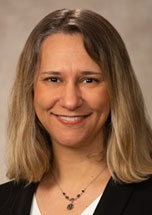
COVID-19 strained the real estate market as remote work untethered location and employment. Workers have flocked to rural and exurban spaces, and companies have ended leases or else downsized office space as fewer employees needed or wanted to use workplaces. And that’s before the Federal Reserve started raising rates, throwing real estate yet another curve ball.
But, of course, not every community bled office space and commercial real estate deals the same way. Some showed more resilience in the face of adversity than others. These instances let us peek into communities and see how well they’re faring.
University of Arkansas clinical associate professor Dobrina Jandik studied what was different about the communities that better weathered the impact of COVID-19. Jandik and her coauthors, Mary Daugherty and Tatiana Salikhova, argue a community’s social capital helped smooth the trouble the pandemic imposed on local economies.
Their article, “Post-COVID-19 Real Estate Net Absorption and Social Capital in U.S. Metropolitan Areas,” theorizes that social capital helps ensure transactions are completed. In turn, that social capital helped keep office spaces occupied during the heights of the pandemic. Jandik, Daugherty, and Salikhova thus demonstrate the tangible benefits communities can garner by investing in their social capital.
Net Absorption and Social Capital
Jandik, Daugherty, and Salikhova’s research explored the interplay between social capital and commercial real estate net absorption. They found that high rates of social capital corresponded to higher rates of net absorption in the wake of the pandemic’s disruption.
Social capital has a long history in social scientific research, and finance researchers use the concept to measure the nonmonetary assets that communities support. It largely refers to all the groups and organizations, from bowling leagues to churches, that facilitate inherent trust among a community even when there is significant information asymmetry. These networks help us cooperate and trust each other.
Net absorption is the net change in occupied office space between two quarters. It isn’t measuring vacancy directly, but instead, it calculates the overall trajectory of the real estate market quarter by quarter.
In their analysis, the researchers controlled for economic and population growth because that could change the apparent net absorption. Similarly, they measured lagged vacancy rates and lagged rent rates to capture overall market trends before COVID. They also included a variable for the political dimensions of a region, suspecting that political proclivities for social distancing might also affect rates of net absorption.
COVID Affected Some Regions More than Others
Jandik, Daugherty, and Salikhova found that there was a universal decline in net absorption due to the COVID-19 pandemic. That is, no metropolitan area’s real estate market was able to escape the downturn.
That said, areas with more social capital performed better than others. The researchers found that there was a loss of 0.25 million square feet (msf) of average net absorption in areas with high social capital, whereas low social capital regions saw a loss of 0.35 msf. Moreover, there was significant difference between average net absorptions between pre- and post-COVID times. Areas with high social capital saw an average difference of -0.337 msf compared to low social capital areas’ -0.518 msf.
The economic impacts of social capital are profound. Jandik, Daugherty, and Salikhova’s model shows that one standard deviation increase in social capital added an additional 0.093 msf of real estate net absorption. According to the researchers’ measurements, this increase would have offset 22.1% of the decline in the real estate market associated with the COVID-19 pandemic.
How Social Capital Affects Organizations
Organizations that promote social capital can be further segmented into P- and O-type organizations. P-type organizations are civil, sporting, or religious groups, and O-type ones are political, labor, or business groups.
Members of P-type organizations are more likely to act beyond the boundaries of the organization together. These organizations are social at their hearts, and they were less likely to socially distance during the pandemic. On the other hand, O-type organizations, while social, are financially oriented. They are rent-seeking organizations whose members want to achieve specific societal goals rather than socialization being a goal unto itself.
In their supplementary analysis, the researchers discovered that the concentration of these P-type organizations drove the positive effects of social capital on net absorption. The more rent-seeking oriented O-type organizations were statistically insignificant in a region’s overall net absorption. So, different kinds of social capital may not be created equal when it comes to a community’s resilience. Less formal and less economically driven connections seem to be better for communities, at least their real estate markets.
The researchers’ work highlights the importance of workers having the time and energy to engage with their communities when off the clock. Work is merely one facet of our lives and, evidently, not the entire machinery of the economy either. Even more business aligned social networks show significant weakness as far as social capital is concerned.
Jandik, Daugherty, and Salikhova show that business communities do benefit from the presence of social organizations. Such organizations feed the social capital that then returns value to business, smoothing transactions and, in the case of Jandik’s research, protects markets from unforeseen shocks. Crisis certainly puts the difference in outcomes between low and high social capital in stark relief, but the researchers’ results point to the overall health of communities’ local economies.







